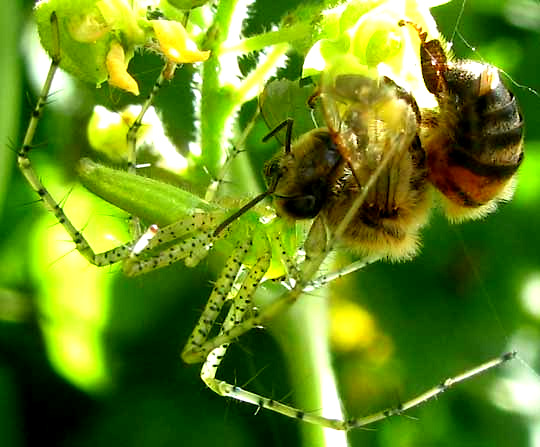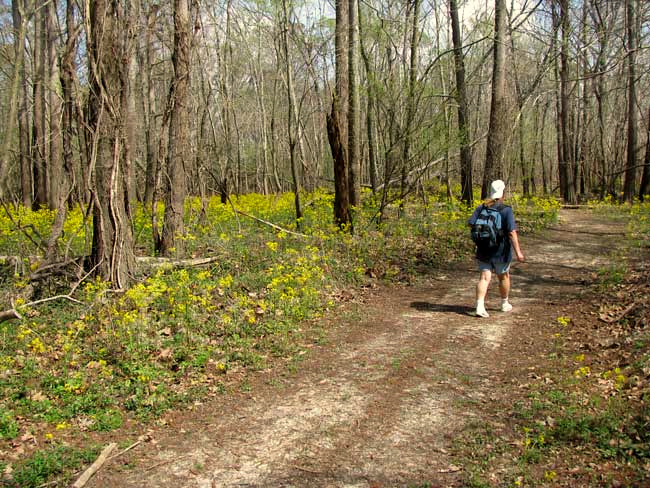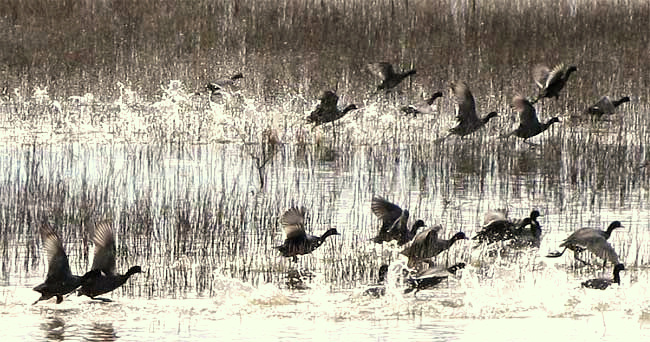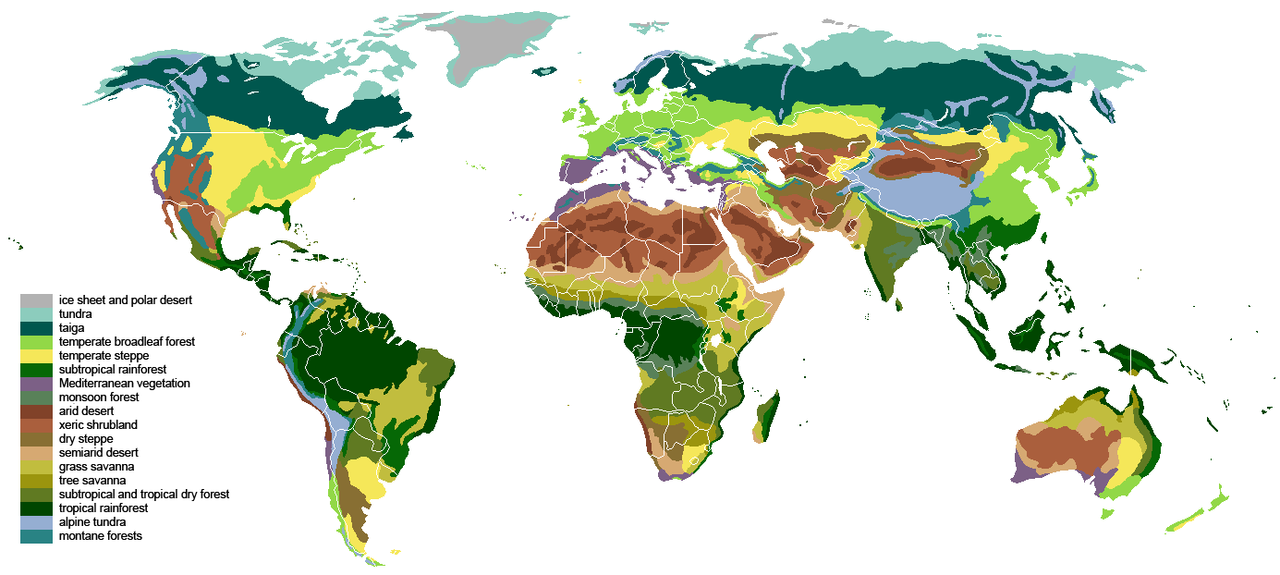Here are some concepts that backyard naturalists need to know:
The niche
 The word niche rhymes with "rich," and all living things have their niches. A niche is the role and position of a species in nature, so the niche concept may take into consideration both a behavior and a place. Sometimes the word is used more loosely, however, as when someone jokes that an animal's niche is defined by what it eats, and what eats it. The Green Lynx spider in the picture is eating a Honeybee. The Green Lynx's niche is that of taking advantage of its green camouflage while lurking among green plants, waiting for all kinds of small insects to overlook them, and come close enough to be nabbed. But, then sometimes it's the spider who gets eaten by a bird or lizard. From Nature's point of view, it all works out just fine.
The word niche rhymes with "rich," and all living things have their niches. A niche is the role and position of a species in nature, so the niche concept may take into consideration both a behavior and a place. Sometimes the word is used more loosely, however, as when someone jokes that an animal's niche is defined by what it eats, and what eats it. The Green Lynx spider in the picture is eating a Honeybee. The Green Lynx's niche is that of taking advantage of its green camouflage while lurking among green plants, waiting for all kinds of small insects to overlook them, and come close enough to be nabbed. But, then sometimes it's the spider who gets eaten by a bird or lizard. From Nature's point of view, it all works out just fine.
If we wanted to be more precise about what an organism's niche is, we might want to know the extremes of heat and cold, dryness and wetness, sun and shade, and other climatic factors the particular organism tolerates. We'd also want to know about the organism's reproductive cycle, and the season and time of day when it's active. In short, every aspect of a plant or animal's existence contributes to the definition of its niche.
The habitat

A habitat is the natural home or environment of an animal, plant, or other organism. Above, we'd say that the pretty yellow wildflowers blossoming in early spring before the trees leafed out -- they're Butterweeds, Packera glabella -- is that of moist-to-wet soil, in this case in a swampy forest. Species can occupy various habitats. Besides swampy forests, butterweeds often show up disturbed soils, such as cultivated fields in early spring before they are tilled, and even along roadsides with moist soil. A Herring Gull's habitat is along coasts, especially in harbors and around garbage dumps, and also on lakes and rivers. The habitat of beech trees is moist, deciduous forest. The concepts of "niche" and "habitat" overlap a bit, but "niche" focuses more on an organism's "job," while the "habitat" is a place with particular features the organism needs.
ECOSYSTEMS
An ecosystem is these things:
- It's the living members of a natural community of plants and animals.
- It's the non-living environment of these organisms, such as soil, water, light, heat, etc.
- It's the fact that all of the above, living and non-living, are inseparably interrelated, and interact with one another
Notice that ecosystems can include other ecosystems. To the bacteria and parasites inhabiting the skin of the American Coots in the picture atop this page, a coot's skin and feathers constitute an ecosystem. Some large ecosystems have special names, such as the biomes mapped below:


